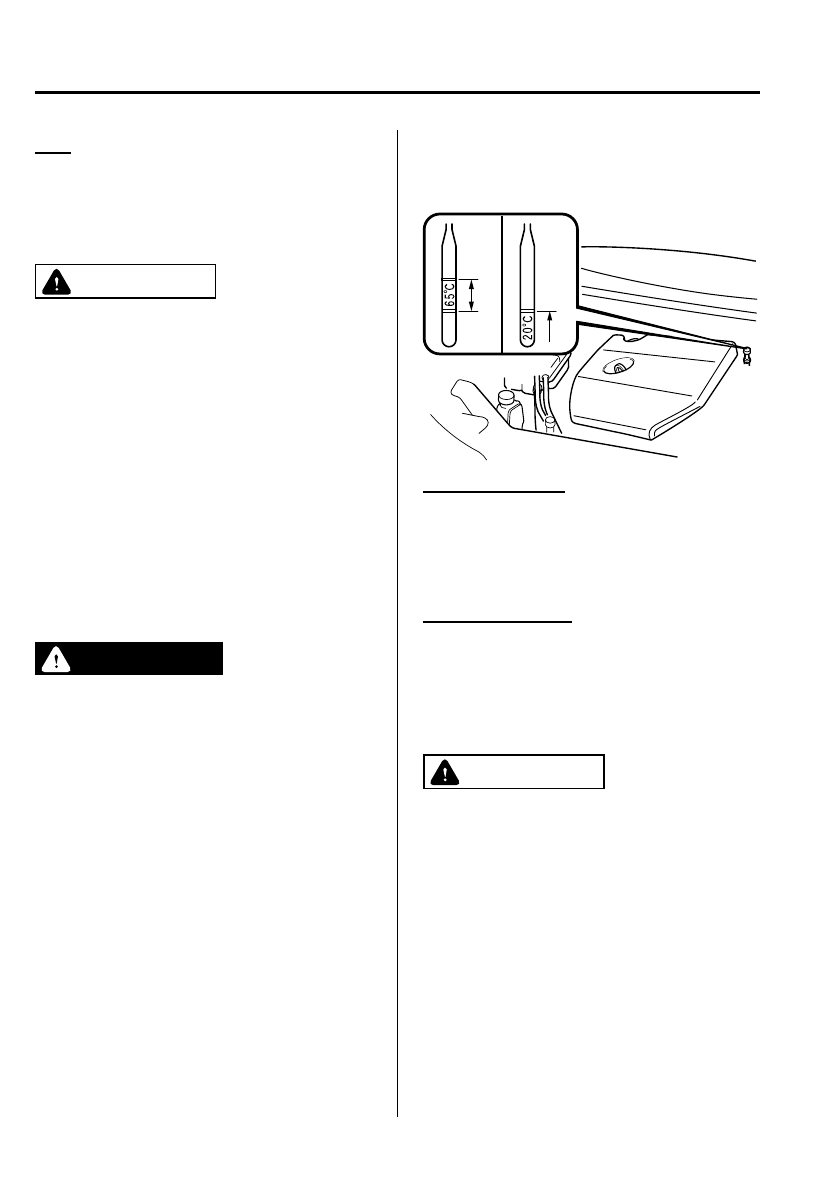
Black plate (294,1)
4AT
The volume of fluid changes with
temperature. Fluid must be checked while
idling the engine without driving at
normal operating temperature.
CAUTION
Ø Low fluid level causes transaxle
slippage. Overfilling can cause
foaming, loss of fluid, and
transaxle malfunction.
Ø Use specified fluid (page 10-4). A
nonspecified fluid could result in
transaxle malfunction and failure.
1. Park on a level surface and set the
parking brake firmly.
2. Start the engine and depress the brake
pedal.
3. Move the shift lever through all ranges,
then set it at P.
WARNING
Make sure the brake pedal is applied
before shifting the shift lever:
Shifting the shift lever without first
depressing the brake pedal is
dangerous. The vehicle could move
suddenly and cause an accident.
4. With the engine still idling, pull out the
dipstick, wipe it clean, and put it back.
5. Pull it out again.
The proper fluid level is marked on the
dipstick as follows.
A
Full
Low
B
Full
Fluid hot scale A
When the vehicle has been driven and the
fluid is at normal operating temperature,
about 65°C (150°F), the level must be
between Full and Low.
Fluid cold scale B
When the engine has not been running
and the outside temperature is about 20°C
(70°F), the fluid level should be close to,
but not above, the bottom notch on the
dipstick.
CAUTION
Ø Use the cold scale only as a
reference.
Ø If outside temperature is lower
than about 20°C (70°F), start the
engine and inspect the fluid level
after the engine reaches operating
temperature.
Ø If the vehicle has been driven for
an extended period at high speeds
or in city traffic in hot weather,
inspect the level only after
stopping the engine and allowing
the fluid to cool for 30 minutes.
8-26
Maintenance andCare
Owner Maintenance
Mazda3_8X41-EA-07F_Edition1 Page294
Wednesday, April 25 2007 1:6 PM
Form No.8X41-EA-07F


















